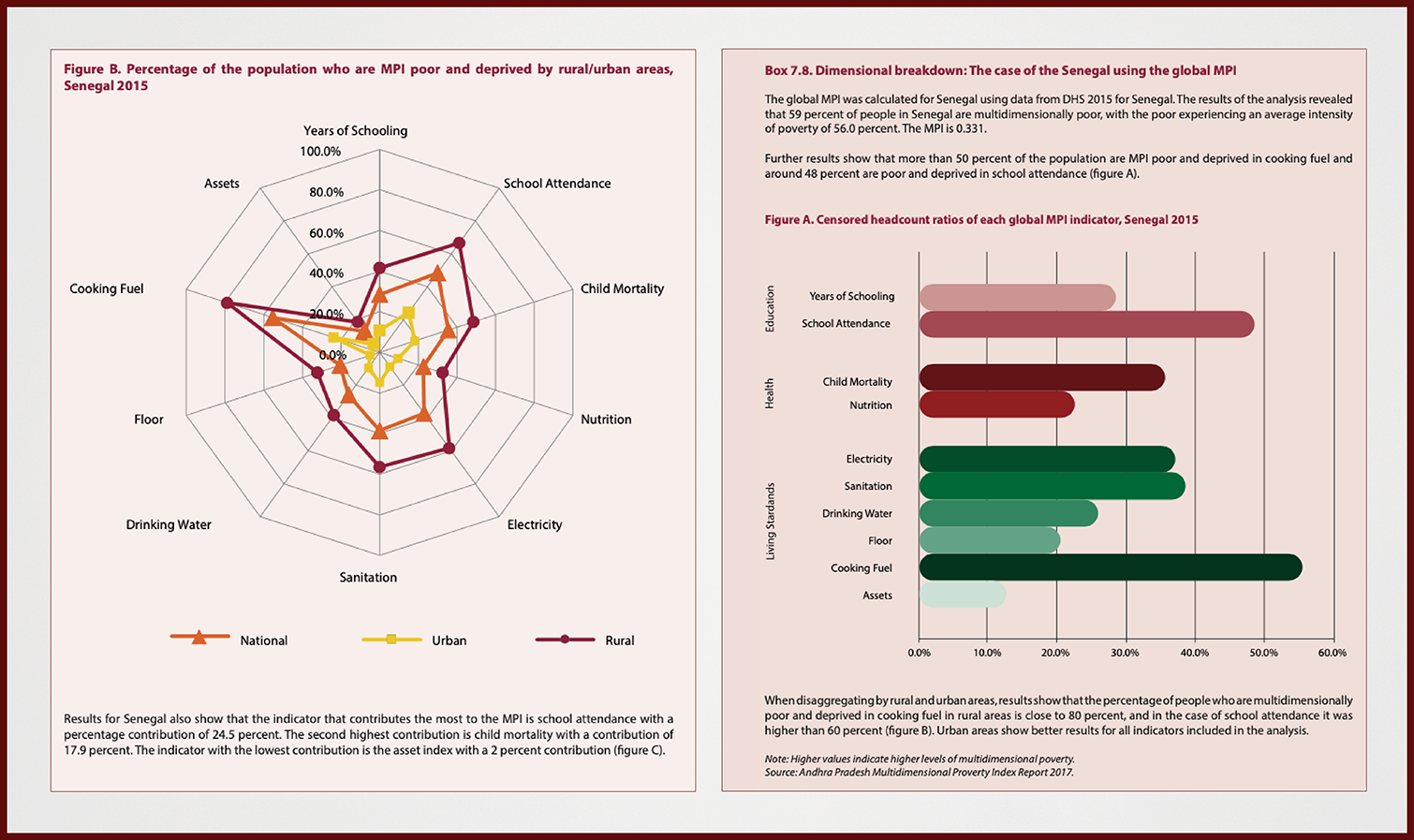Designing a Multidimensional Poverty Index (MPI)
Each official permanent national Multidimensional Poverty Index (MPI) is created following the processes of governance in a country.
The actors and order of steps vary across countries, but in general the process of building an MPI includes the following stages:
- Initial discussions and engagement across a wide range of stakeholders inside and outside government.
- Formulation of a Technical Committee and a Steering Committee to act as technical and political champions of the project.
- Capacity-building training on the AF method upon which the MPI is based for the technical team that will be computing and interpreting the national MPI.
- Discussion of potential indicators to be included.
- Selection of data sources and a long list of potential indicators.
- Implementation of several candidate MPIs having different structures to clarify the robustness of findings and ensure the final measure meets technical standards.
- Steering Committee selection of final MPI and poverty cut-off(s).
- Finalization of the national MPI, including analysis and report writing.
- Formal approval of official permanent MPI, data tables and report.
- Launch of national MPI, ideally involving both technical and policy leaders and key stakeholders.
- Communications campaign across print, broadcast and digital media tailored to target audiences across language groups at national and subnational levels.
- Reporting of the national MPI in the global SDG Database as SDG Indicator 1.2.2
- Presentations of national MPI to sectoral ministries and subnational governments with the aim that policy actors use the MPI to reduce poverty cost-effectively and monitor changes over time.
- Sharing of national experiences by technical and policy actors both in a South-South network such as the MPPN and in major international fora.
Find out more
- For more details about the process of building an MPI, download this joint handbook How to Build a National Multidimensional Poverty Index (MPI): Using the MPI to inform the SDGs by the United Nations Development Programme (UNDP) and OPHI. It provides practical guidance for policymakers, statisticians, practitioners and others seeking or engaged in developing a national Multidimensional Poverty Index (MPI). It is also intended as a resource for academics, journalists and others interested in broadening their country’s poverty metrics, in line with the 2030 Agenda and Sustainable Development Goals (SDGs).
- Explore our range of courses from an online self-paced MOOC to the annual OPHI Summer School and OPHI Executive Education programmes.
- Learn more about the AF method and the technical steps of building an MPI.
- If you would like to learn more about how OPHI can help support the process of building an MPI, please contact us via the OPHI Programme Manager.



